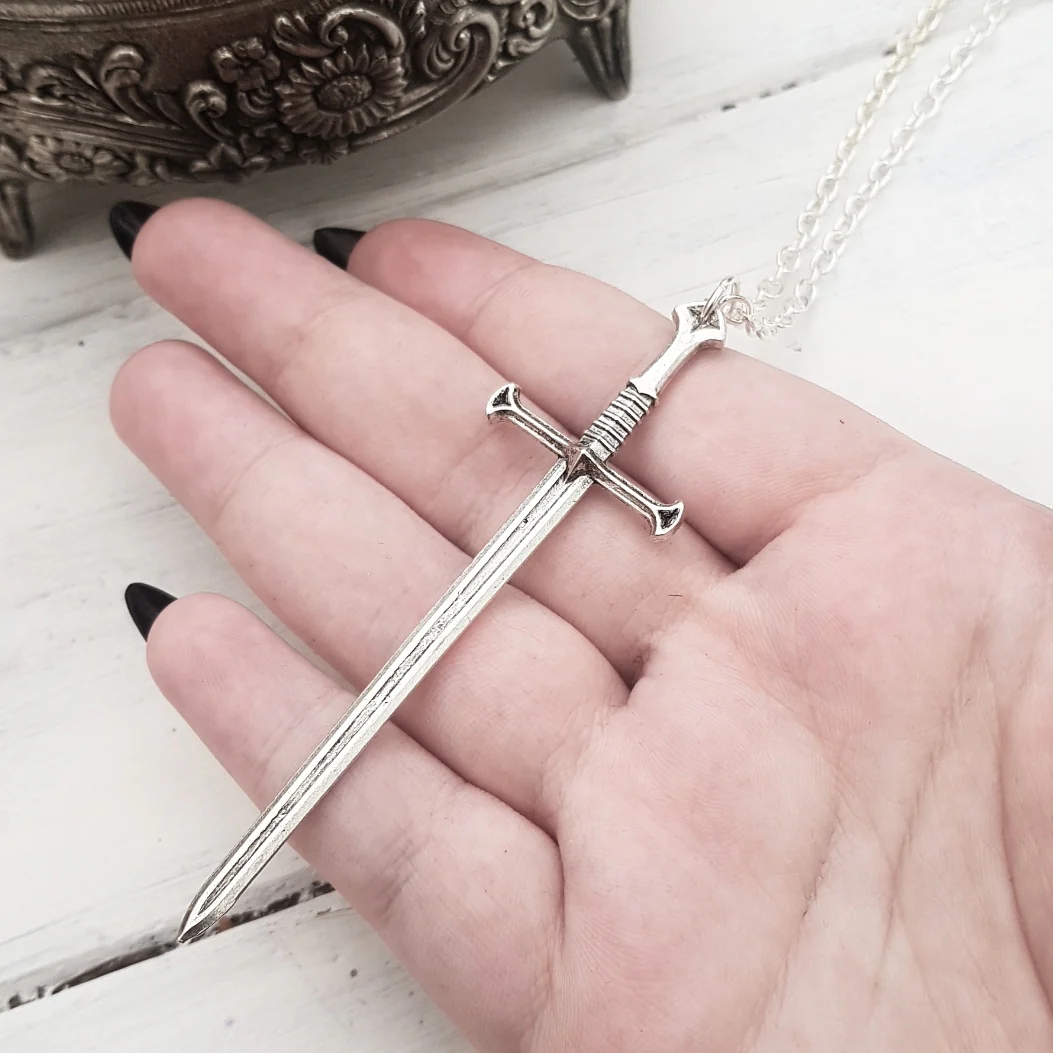The sword necklace is more than just a piece of jewelry; it is a powerful symbol of strength, bravery, and elegance. Throughout history, swords have been regarded as tools of combat and honor, representing warriors and kings who fought for their beliefs and their people. Today, the sword necklace has evolved into a fashionable accessory that carries deep meaning and cultural significance.
A Historical Connection
Swords have long been associated with nobility and power. In many cultures, they were not only used in battle but also served as ceremonial objects, passed down from one generation to the next as signs of heritage and authority. Whether it was a knight’s sword or a samurai’s katana, these weapons embodied courage, discipline, and leadership. The sword necklace draws from this rich history, reminding us of these timeless values while presenting them in a more delicate and personal form. By wearing a sword necklace, individuals can connect with the stories of their ancestors, celebrating their legacy and values.
A Modern Interpretation
In modern times, the sword necklace has become a unique way for individuals to express themselves. It may be worn to signify inner strength, resilience, or the wearer’s desire to overcome challenges. Some people opt for a sword necklace as a way of honoring their heritage or a particular tradition that resonates with them, while others appreciate the striking design. The sword’s symbolism can vary greatly, representing everything from a protective charm to a reminder of personal battles. This versatility makes the sword necklace a favorite among those who seek to convey complex narratives through their accessories.
Designs and Styles
Sword necklaces come in many different styles, ranging from minimalist, sleek designs to intricate, embellished versions. Some feature gemstones or intricate engravings along the blade or hilt, adding an element of luxury. Others might showcase more symbolic details, such as mythical motifs or representations of ancient cultures. The choice of material—silver, gold, stainless steel, or even leather—can also influence the necklace’s overall tone, whether it’s a refined piece suitable for formal occasions or a more rugged option for casual wear. Customization options further allow individuals to create a piece that truly resonates with their personal story.
A Personal Symbol
For many, the sword necklace serves as a deeply personal piece of jewelry. It can represent a journey of personal growth, a reminder of the battles one has fought (both external and internal), or an emblem of courage in the face of adversity. Wearing a sword necklace can serve as a form of self-expression, a daily reminder that one carries the strength to overcome obstacles and live with honor. This personal connection transforms a simple accessory into a powerful talisman, inspiring confidence and resilience in everyday life.
Cultural Significance
The sword necklace transcends cultural boundaries, appearing in various forms across the globe. In some cultures, it symbolizes protection and valor, while in others, it may represent justice and truth. This universality allows individuals from diverse backgrounds to connect with the symbolism of the sword, fostering a sense of shared humanity. The sword necklace becomes a bridge that links past and present, uniting people through shared values of courage, honor, and strength.
Conclusion
In conclusion, the sword necklace is much more than just a stylish accessory. It is a symbol of power, tradition, and personal resilience. Whether worn as a historical nod or a modern statement of self-expression, it carries deep meaning that resonates across cultures and time periods. The ultimate appeal of the sword necklace lies in its ability to encapsulate stories of bravery, honor, and individuality, making it a cherished piece for those who wear it. As fashion continues to evolve, the sword necklace remains a timeless emblem, embodying the strength and elegance inherent in its design.
